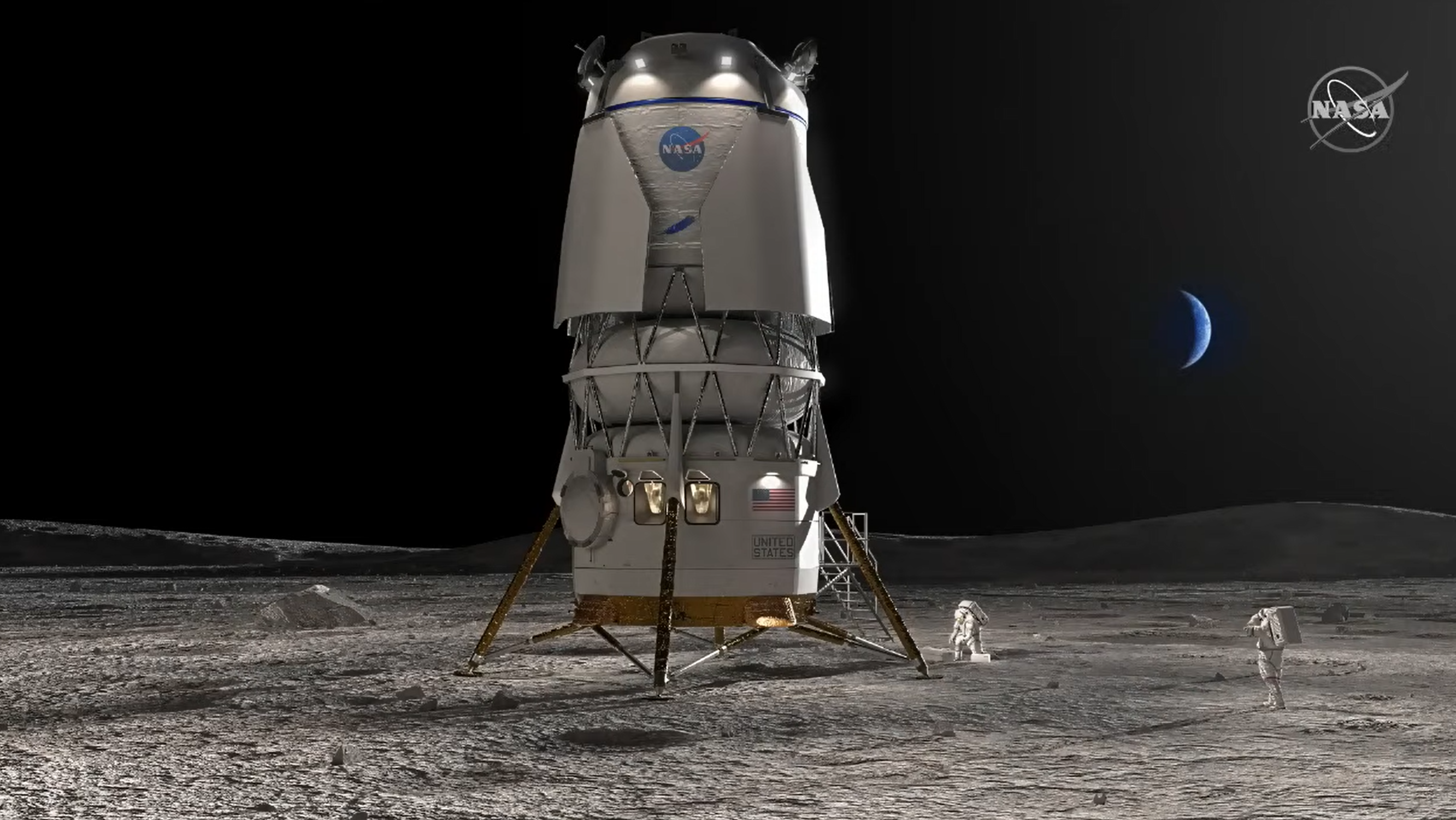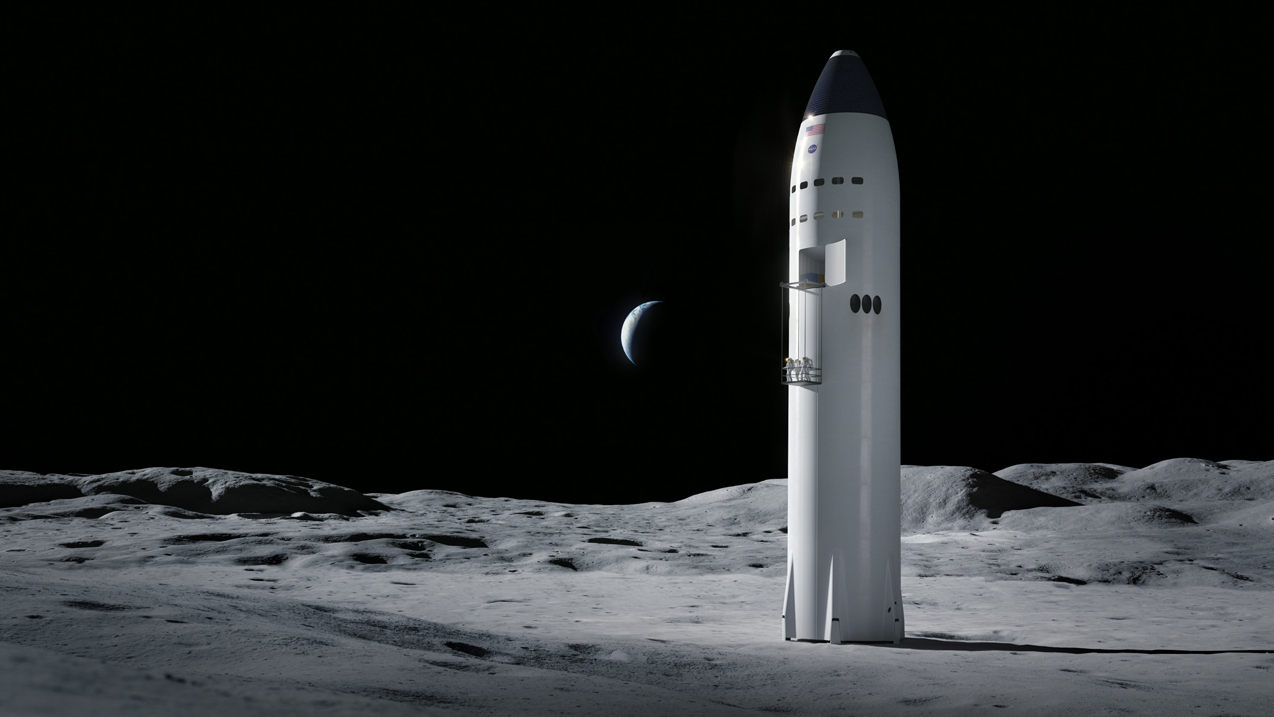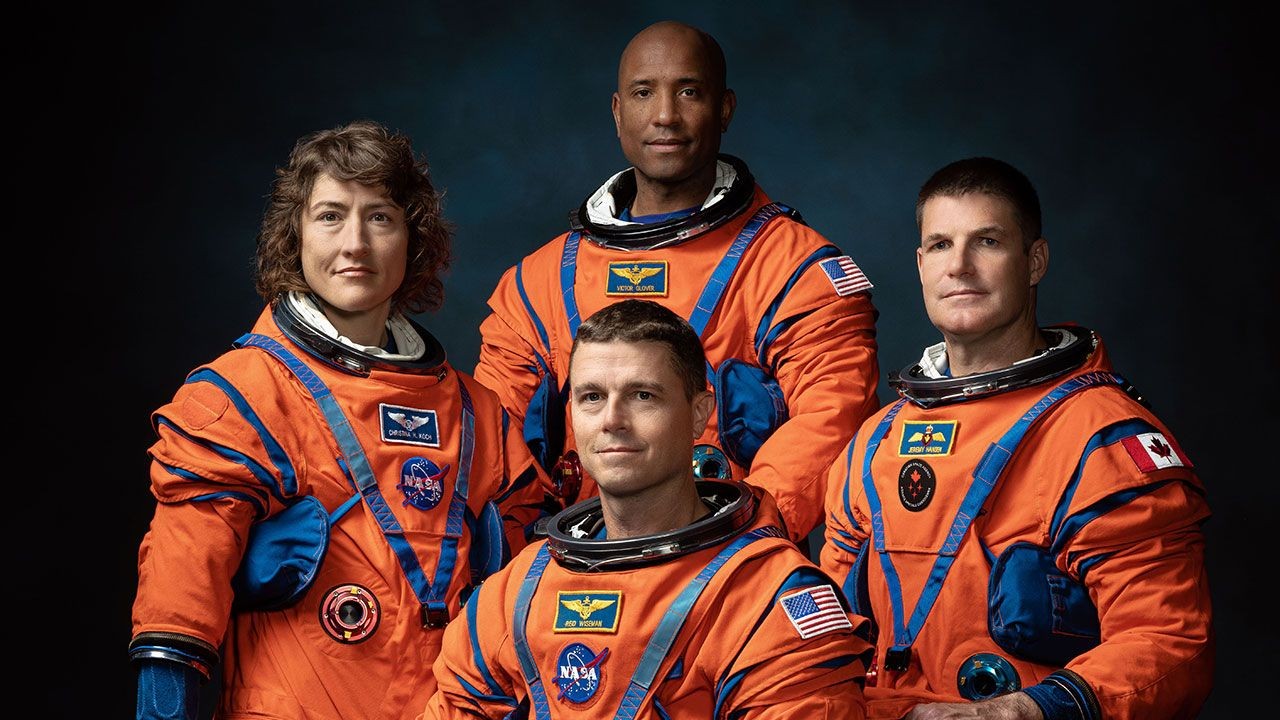Blue Origin will build NASA's new moon lander for Artemis astronauts
It's the second Artemis crew lander after SpaceX's Starship, which was selected in 2021.

A moon lander built by Jeff Bezos' Blue Origin will be the second system that takes NASA astronauts to the lunar surface, agency officials announced today (May 19).
A consortium led by Blue Origin won the second Human Landing System (HLS) contract issued by NASA for the Artemis program, the agency said during a livestreamed announcement from Washington, D.C. today. Under the $3.4 billion award, Blue Origin will provide a second astronaut moon-landing option for NASA beyond SpaceX's Starship, which was selected in 2021.
"An additional, different lander will help ensure that we have the hardware necessary for a series of landings to carry out the science and technology development on the surface of the moon," NASA Administrator Bill Nelson said during the press conference.
Related: NASA's new moon lander contest heats up with Blue Origin, Northrop Grumman
Blue Origin representatives said that the lander, called Blue Moon, will be ready for the planned landing of the Artemis 5 mission in 2029, after test launches and landings.
"We'll be testing out full lander systems and the full architecture prior to any astronauts entering the vehicle, and that will be roughly one year prior," John Couluris, Blue Origin's vice president for lunar transportation, said during the same press conference.
Artemis 5 calls for Blue Moon to launch on a yet-to-be-announced rocket and dock with Gateway, a future NASA-led outpost in lunar orbit. The astronauts will launch separately aboard NASA's Space Launch System rocket in an Orion spacecraft. After docking with Gateway, two astronauts will move into Blue Moon to journey to the south pole of the moon for about a week.
Get the Space.com Newsletter
Breaking space news, the latest updates on rocket launches, skywatching events and more!
Noting that Japan's ispace and Israel's SpaceIL failed to land their robotic, privately developed landers safely on the surface of the moon recently, Couluris said Blue Origin will lean upon its large industry team for "lessons learned so we don't repeat those lessons again" on the Artemis 5 mission.
Blue Origin's "SLD National Team" also includes Lockheed Martin, Draper, Boeing, Astrobotic and Honeybee Robotics. Lockheed Martin will provide a cislunar transporter to refuel the reusable Blue Moon, which will remain in a "parking orbit" between landing missions to reduce cost.
NASA officials declined to say in the conference what made Blue Origin's bid the winning option, saying documentation would be coming out shortly. Bidding on the new HLS contract closed in December. There was one other competitor, a consortium led by Northrop Grumman, a former collaborator with Blue Origin during the last HLS round that concluded in 2021.
Related: Blue Origin unveils 'Blue Moon,' its big lunar lander

The origin of the new HLS award dates to April 2021, shortly after NASA made SpaceX its sole choice for an Artemis lander after reviewing three bids. The decision surprised some people, who expected that NASA would choose two of the three companies then vying for the lucrative contract, in part to ensure a backup option.
NASA's selection of SpaceX sparked complaints from fellow competitors Blue Origin and Dynetics, along with a lawsuit from Blue Origin. The legal wrangling delayed the implementation of SpaceX's contract by several months.
While the agency was eventually cleared to proceed, in September 2021 the Senate Appropriations Committee directed NASA to choose a second company to build a crewed Artemis lander. NASA issued the new HLS call for proposals a year later, following industry consultation on drafts.
In its 2021 report, the Senate noted that NASA's Human Launch System program was not underfunded, which NASA had claimed in its decision to solely fund SpaceX. NASA's $24.83 billion budget that fiscal year was slight more than the $24.8 billion that NASA requested, and most of the increase was for HLS.
Related: Elon Musk scorns Jeff Bezos' lawsuit on NASA moon lander

The Artemis 3 mission will use SpaceX's Starship system to land near the moon's south pole. It's set to launch no earlier than 2025, depending on how development with Starship goes. SpaceX has also been tasked with landing the astronauts of Artemis 4.
Starship has been delayed in its development due to numerous factors, and in August 2022 NASA's Office of the Inspector General warned that the first human moon landing since Apollo may push to at least 2026 as a result.
SpaceX originally aimed to attempt a Starship space launch in 2021, but the required paperwork and consultation to complete the environmental review with the Federal Aviation Administration (FAA), along with development work, meant that a launch was not possible until April 2023.
Last month's dramatic, highly anticipated launch ended a few minutes after liftoff; Starship experienced some issues in flight, and SpaceX commanded its destruction high over the Gulf of Mexico.
Starship's Super Heavy booster, the most powerful launching system in the world, blasted concrete debris out of its launch pad that reached the nearby ocean. The liftoff also kicked up a huge cloud of sand and debris, spraying it over numerous square miles, including at least one town.
Starship is now grounded pending an FAA review of the launch; earlier this month, environmental groups jointly launched a lawsuit against the FAA. SpaceX founder Elon Musk, however, said in early May that Starship could launch again within two months.
Join our Space Forums to keep talking space on the latest missions, night sky and more! And if you have a news tip, correction or comment, let us know at: community@space.com.

Elizabeth Howell (she/her), Ph.D., was a staff writer in the spaceflight channel between 2022 and 2024 specializing in Canadian space news. She was contributing writer for Space.com for 10 years from 2012 to 2024. Elizabeth's reporting includes multiple exclusives with the White House, leading world coverage about a lost-and-found space tomato on the International Space Station, witnessing five human spaceflight launches on two continents, flying parabolic, working inside a spacesuit, and participating in a simulated Mars mission. Her latest book, "Why Am I Taller?" (ECW Press, 2022) is co-written with astronaut Dave Williams.









